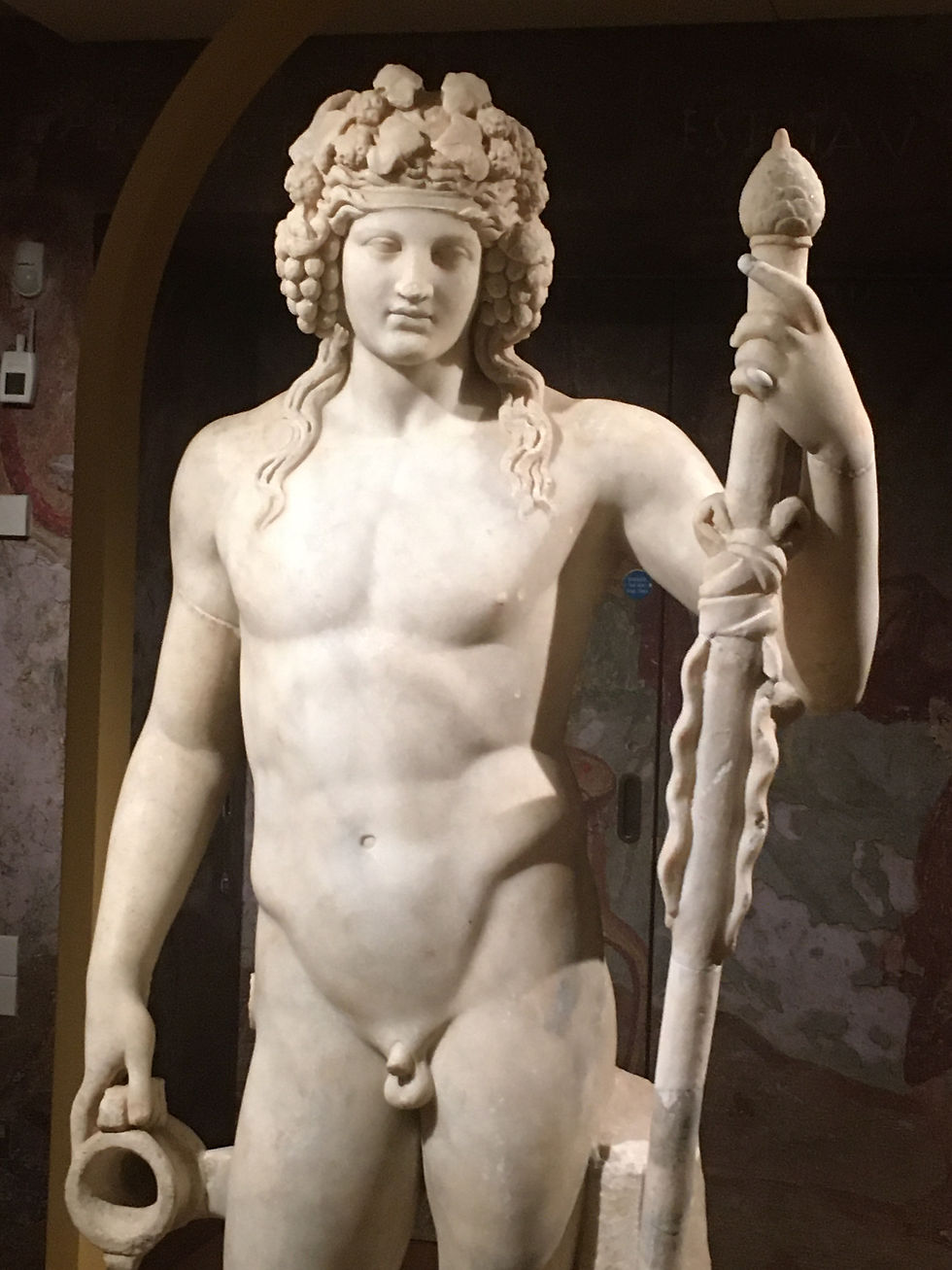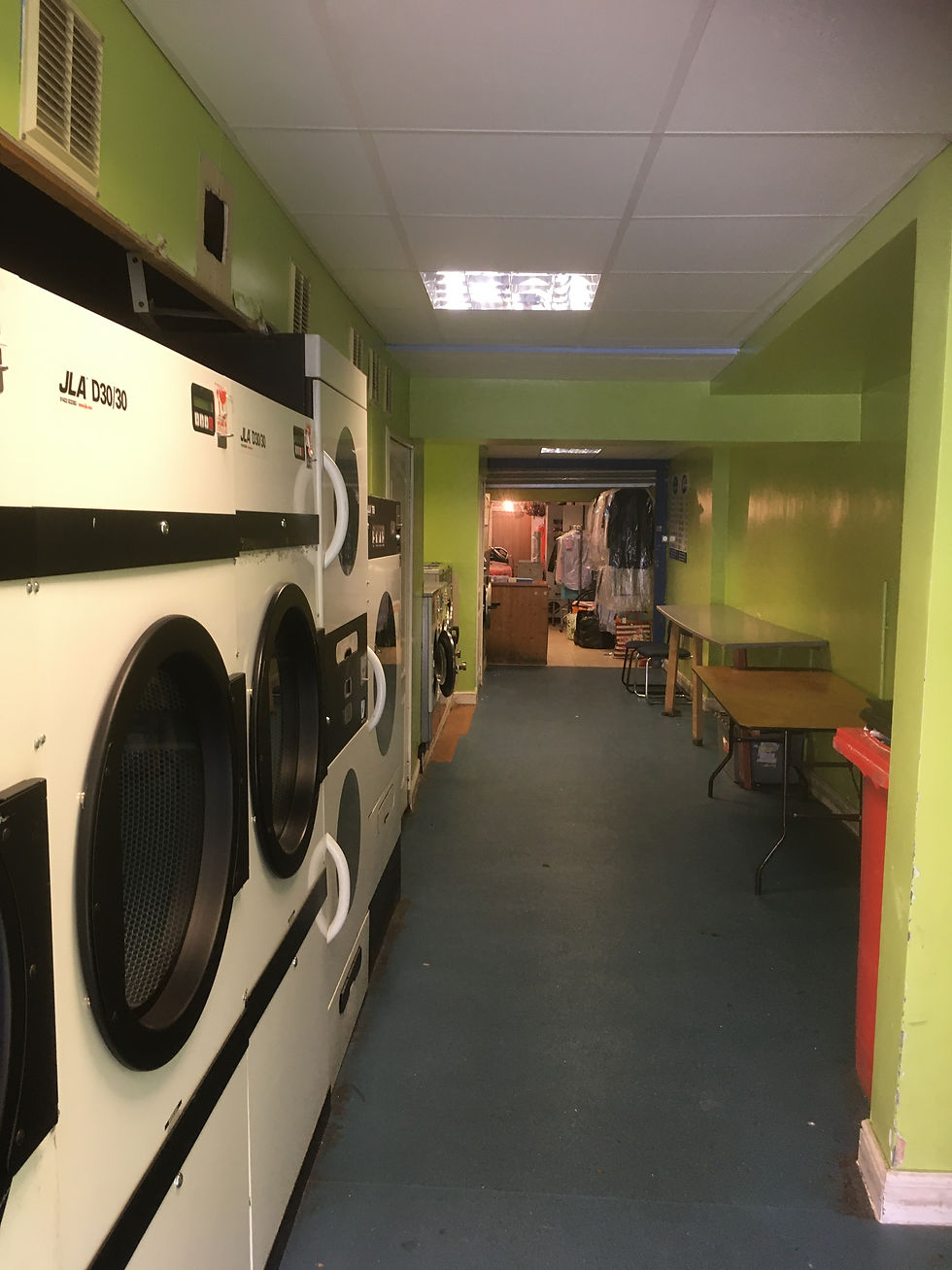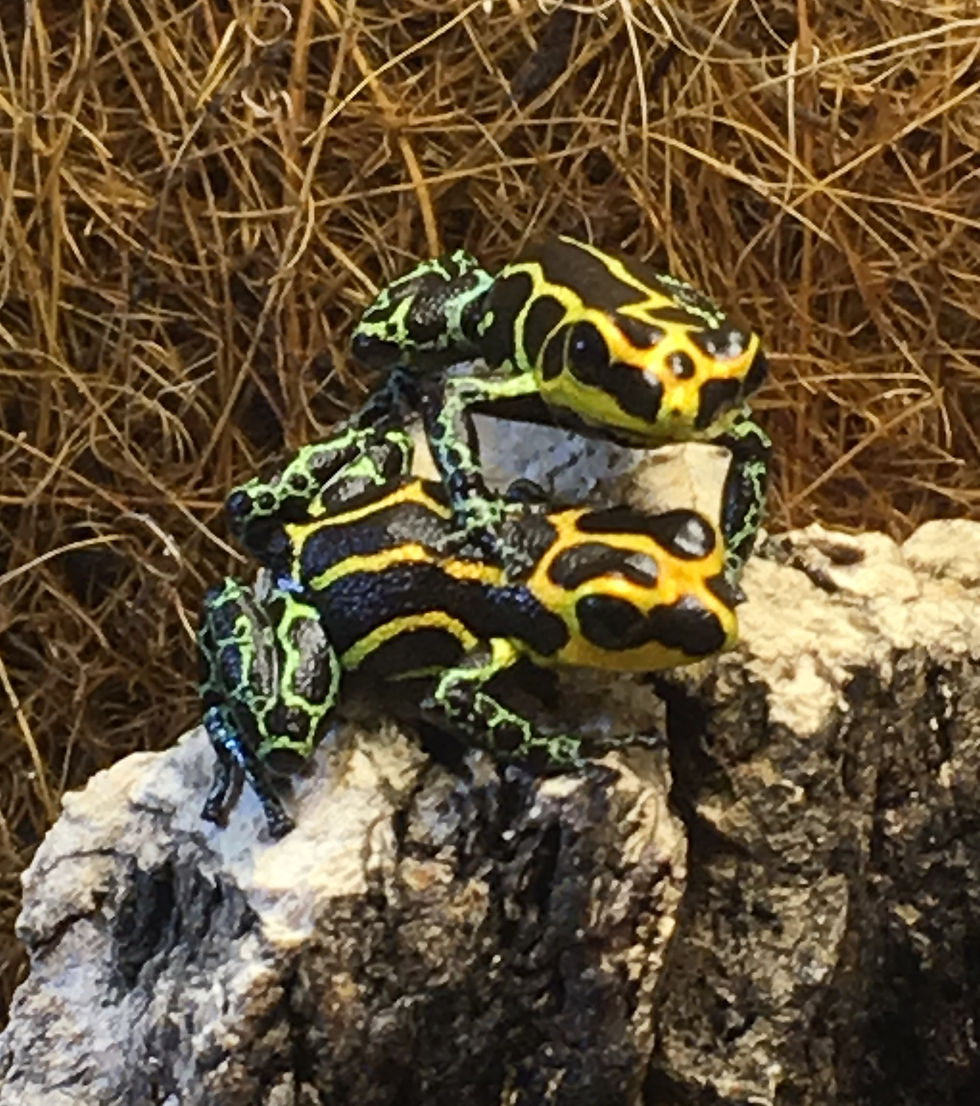Carpe Diem! – A Lesson From Pompeii
- Ricster

- Oct 24, 2019
- 4 min read
Updated: Oct 27, 2020

This Jolly person looks down at me as I do a bit of voluntary work at the Ashmolean. I'm on the entry desk for the the Pompeii exhibition The Last Supper. This figure looks like an alcoholic to me - prancing along those wine flasks.
Voluntary work is very liberating actually – there was no 3 person panel interview to get through to do it and I feel free – I choose to be there. Also Sunday morning is a good time to engage with the public – it gets me up and about. Sunday has never been my favourite day; dare I say it has a tinge of death about it. It's like an ending, Sundayitis we called it in my family– a growing sense of dread during that day. In memory it was going to Mass, the end of the holidays, back to work. That bleak after shock from drinking too much on Friday and Saturday nights. Sunday evenings were an anxious waiting room.
But this exhibition is all about wine, women and song apart from the death. “Carpe Diem” the Romans said. “Seize the day!” Tempus Fuget is another. “Time waits for no man” my Mother used to say. Why wouldn't anybody seize the day? Fear and a Catholic upbringing perhaps.

Pompeii's wealth was based on wine – the vines growing in the special volcanic soil about Mount Vesuvius. Dionysus –or rather for the Romans -Bacchus represents the appeal of letting it all hang out and the ultimately elusive promise of alcohol.
When I was a student at Huddersfield Polytechnic I had inscribed on my ring binder “He who hesitates breeds pestilence” a quote from William Blake. But I did breed pestilence and I did hesitate. Too much fear and too much alcohol did for me. Until many years later I stopped and started to feel the fear and do it anyway -to the best of my ability.
At Huddersfield (it's now a University!) the very strange Wuthering Hights was a course book. Visiting Howarth, not far from Huddersfield, it was all quite picturesque in that gritty Yorkshire way. But in Howarth at the time of the Bronte sisters- the average life expectancy was 25.8 years; 41.6% died before the age of six. Perhaps most appallingly, Babbage’s investigation confirmed that the graveyard, situated on the hill at the top of the town and in front of the Brontës’ home, was so overcrowded and poorly oxygenated that decomposing, putrid matter filtered into the water supply.*

This skeleton mosaic had hung in the dining area or Triclinium – where the three dining couches sat. The two worlds of death and feasting came together at the convivium or banquet. – Seize the day because death is just round the corner. Though the skeleton seems to suggest that the party carries on after death. On the Etrustcan tombs we see the figures reclining – happily waiting for their wine cups to be refilled. Nowadays we don't have any such certainties

Very generally speaking at least in much of the world we live in a time where death is less in our faces - so to speak. – we generally live much longer, with better chance of surviving illness.
Most children and mothers survive birth. but everybody seems very fearful . Our children are being scared witless with fears of climate Armageddon. There has been less talk of the possibility of a drug resistant pandemic -that would bring everybody to their senses. But was there not a better time to be alive? At least in much of the world there are good chances of living a long life. There are problems of course but I think the Romans could teach us a thing or two. I don't think people fear death as much as fear life.
Perhaps current talk of Armageddon is a kind of mass neurosis caused by an unfulfilled hunger for belief or faith within a largely secular society. Maybe the problem is not fear of death – it is fear of life. At the end of The Brothers Karamazov; Dostoyevsky's great novel (another Huddersfield course book) the religious novice Alyosha says “Oh my dear children, my dear friends, do not be afraid of life!”
The people of Pompeii had a good attitude but they didn't know that probably, this very evening in AD 79 death really was just a few hours away; this really was their last supper. Next day Vesuvius erupted. The people were frozen rigid almost instantly by the heat and the whole city buried under ash and forgotten. One such victim is on display – a wax cast containing the skeletal remains, displayed nearby is the jewellery she was actually wearing at her last moment
I checked on the current state of Vesuvius and it is still waiting for it's next eruption – it threatens more than 3 million people and could wipe out the city of Naples.
* (Sanitary report on Haworth, home to the Brontës 1850)
Last Supper in Pompeii shows at the Ashmolean Oxford until 12th January 2020




Comments